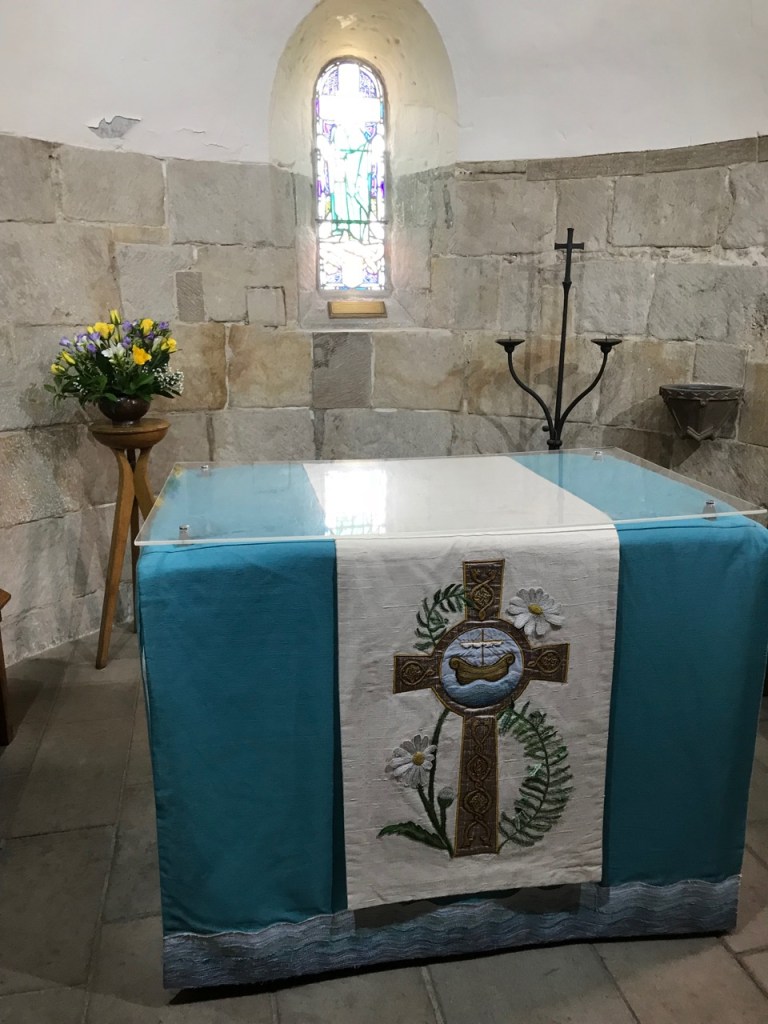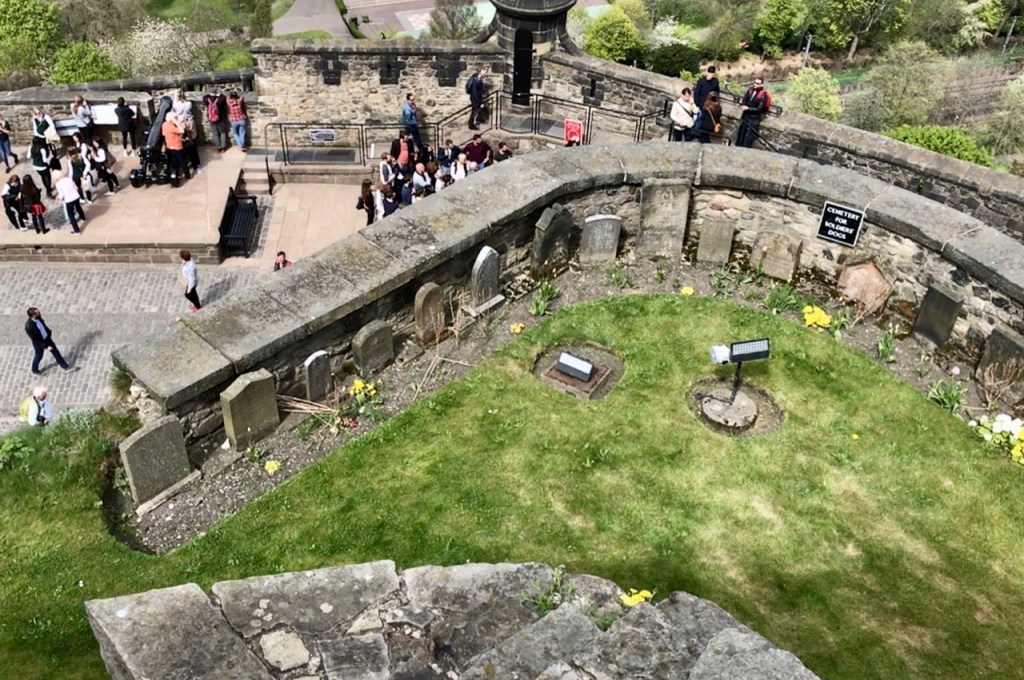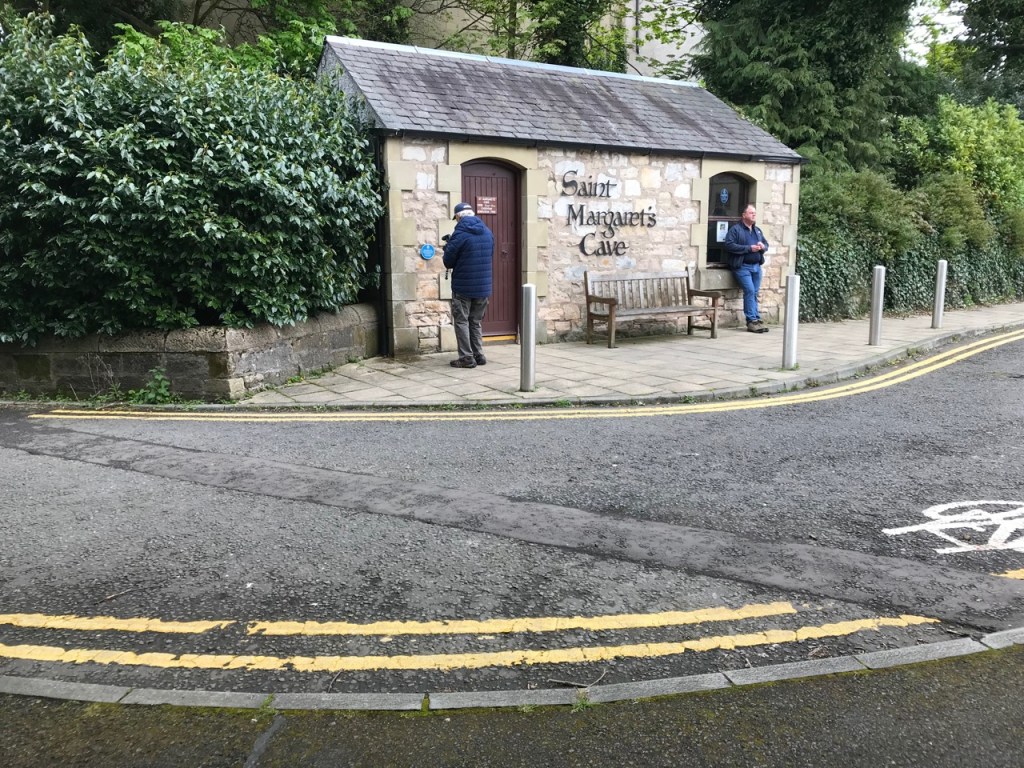



I’m tomorrow night’s guest on the Modern Romantic podcast – their goal is to inspire others to follow their dreams and stay strong while pursuing them! The live stream, which begins at 7:00 p.m. Central Time, can be heard at www.twitch.tv/themodernromantic. You can ask questions or make comments during that time. Afterward, it will be available on most podcast outlets, including Amazon Music, Apple Podcasts, and Google Podcasts. I hope you’ll give the interview a listen. I plan to be encouraging and entertaining!

Summer is winding down – still holding on but wearying. One of the great joys of living in Arkansas for the last four years has been watching the seasons change because they still surprise and delight me after decades of life in California. With each passing year here I can sense the seasonal rhythms more deeply. These days, when I walk the trails through the forest every morning with dog-dog Asha it feels like the end of fireworks show – when the operators throw up all the remaining fireworks simultaneously, and you know the show is ending – just so, nature is displaying her final green spurts and bright flowers before turning to the reds and golds of autumn. Enjoy some of the photos I’ve taken this summer.
The temperatures are cooling.




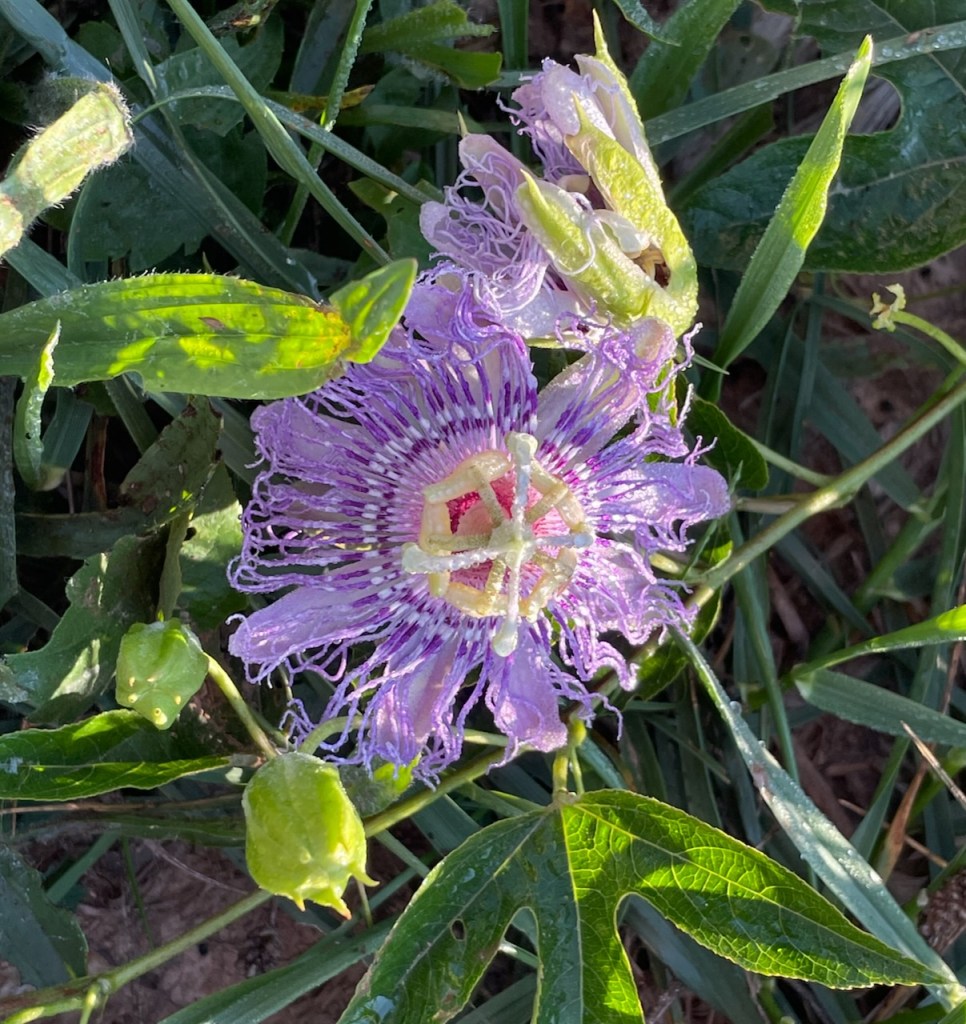



I hope your summer brought you beauty.
Lisa

In conjunction with my fabulously talented and experienced husband, I’m making a documentary about the early Italian immigrants in our community. Please check this out.
ImmigrantsDoc

I should know.
A woman’s hair helps to define her self-image and it’s usually one of her most prized characteristics! Small wonder we women spend so much time on it. I’ve been bald twice in my life, and both times it was an experience, to say the least. The last time I was bald was during chemotherapy – I’ve had breast cancer twice. Substantial time passed before I had a full head of hair again, but it’s once again down to my shoulders and it’s as thick as it orginally was, so I’m pleased. I still touch it sometimes, just to enjoy its texture and weight.
But the first time I was bald, (and it was a while ago), it was only for one day. I had a small role on an episode of “Alien Nation”, directed by the accomplished writer/director/creator/producer Kenneth Johnson. I played an alien (some say it was type casting!) who worked as a housekeeper for an abusive woman. Since the aliens on the series had bald heads covered in light-brown spots, the hair department heavily lacquered my long hair, plastering it against my head before gluing the latex alien skin over it and blending its edges into my own skin with makeup. It was quite a process – I don’t know how the regulars went through that every day! I only had one scene in the episode, but luckily for me, it’s now online in a feature about the “Alien Nation” series. The entire feature is very interesting and I encourage you to watch it all, but if you only want to see my little bit, scroll forward to 7:40. I come onscreen at 7:44 – standing on the right, wearing a sweater with a small pink flower pinned to it. Yes, the effulgence of my brilliance lasts for seconds and seconds! Do enjoy, and I don’t mind if you giggle at my alienness. It was fun. Thank you, Ken Johnson! See link below to watch.

Here’s the link: https://www.joblo.com/alien-nation-tv-show-gone-but-not-forgotten/?fbclid=IwAR2RrOVigZpMEC2co_pUilYeX_vBPj5GfNvNgiN1ljRGT_zWxUzeV-zavIg
Some history, some architecture and a little talking with our hands.

In May of 2018, we traveled to Scotland, the primary excuse being to gather research for my trilogy about Margaret, Queen of Scotland, book one of which is available at Amazon and other book sites, including Bookbaby.
Edinburgh is a great city – one of my favorites – and I happily spent many hours in the library, taking notes as fast and furiously as possible. One day, though, I did get into just a wee bit o’ trouble … only for a minute or two … join the journey at the link below …
As we say a relieved good-bye to 2020 and turn a hopeful gaze toward 2021, I’ve elected to remember a man who lived through a time more treacherous than any my generation has lived through – as a member of the “greatest generation,” one who fought in WWII and who has been written about by Tom Brokaw in a book by the same name. You’ve been introduced to John Hewitt’s family in earlier blogs, but I’ve never told you about John, himself, whom I met on a train platform in Edinburgh, Scotland and to whom I now raise a glass of cheer while humming “Auld Lang Syne.”
Below: John and Doris Hewitt The family: Colin, John, Doris Alistair and David
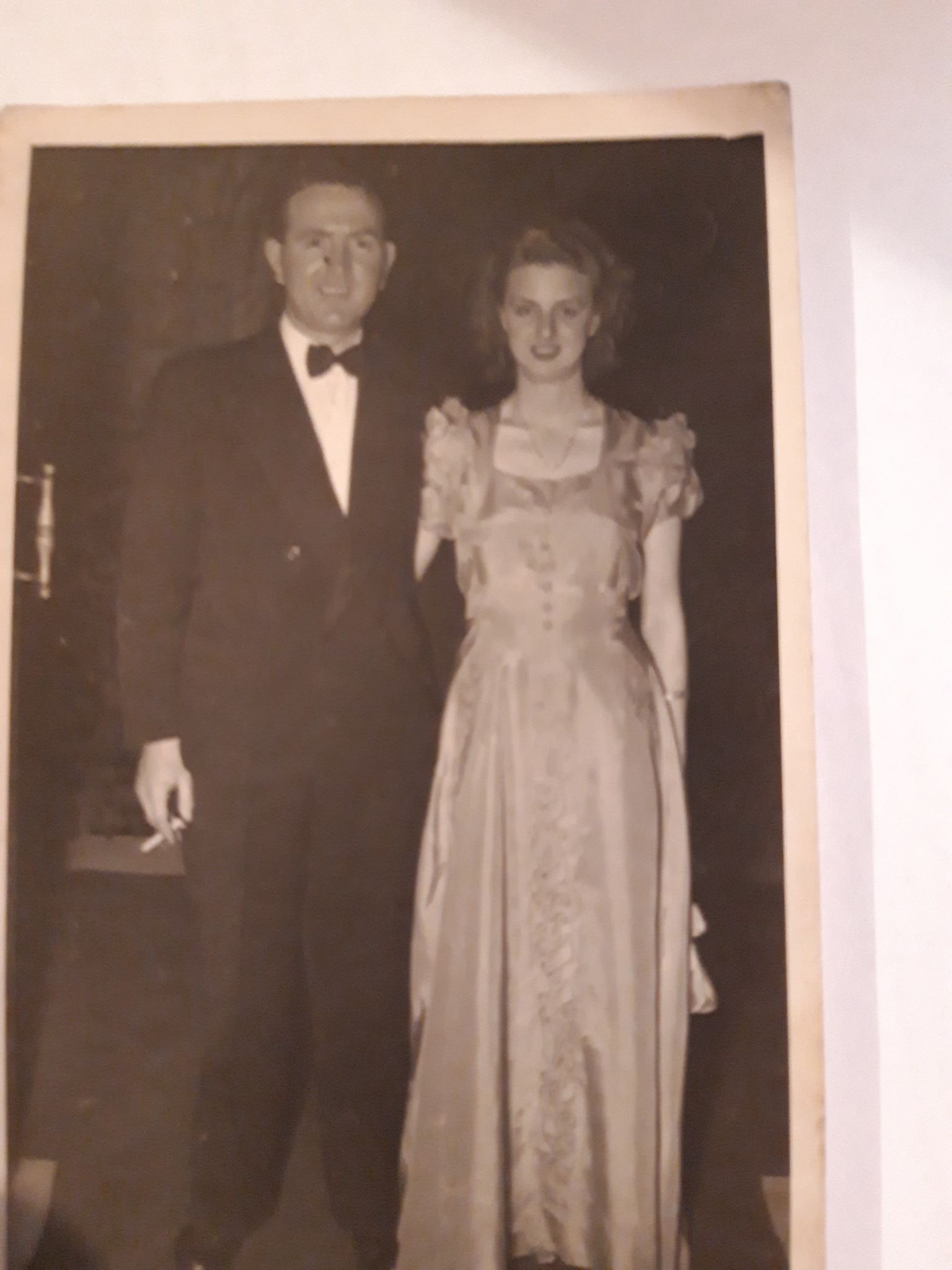

(John, Doris and David have passed).
John joined the British Merchant Navy in 1941, after turning eighteen. He studied at an Edinburgh naval college, graduating as a radio operator and shipping out in ’42. During his years of service, John sailed around the world multiple times, with ports of call at Rio de Janeiro, New York, Boston, the Suez Canal, Egypt, India, Ceylon (Sri Lanka), and South Africa – visiting some of those places several times.
It happened when Colin, now a policeman, spent Christmas of 1988 at Lockerbie, Scotland retrieving bodies from Pan Am Flight 103. The wreckage at the plane crash site was as horrible as what John had seen at Algiers and was difficult for Colin to reconcile in his mind. John quietly sat him down to recount the horrors he’d seen during the war and shared with him how to deal with wrenching and haunting memories, speaking man to man, father to son, military man to military man.
Sharing or listening to an indelibly painful experience requires an intimate and innermost strength, I’d think. Most of us are spared such memories, thank goodness, but John wasn’t, and when his son wasn’t either, he did what had to be done, a trait which perhaps is the best characteristic defining The Greatest Generation.
Here’s to you, John.

THE THREE BATTLES THAT CHANGED HISTORY

My Dad grew up in the days when school children memorized historic dates. “October 14th, 1066,” he’d shout, “The Norman Conquest!” I never thought I’d live to see the day that I’d study the time frame as extensively as I have. My dad would be proud. The Conquest utterly changed the face of Europe. Scandinavia had held sway over England until William, Duke of Normandy sailed to its southern shores and choked it into submission. The English language changed, incorporating French, the feudal system was put into place, Scandinavia lost its grip on the British Isles and a strong monarchy, existing today and still related to William’s tree, was instituted. The battle’s 954th anniversary is upon us, so raise a glass of ale, I guess.

There were actually three pivotal battles in 1066. On September 20th, the King of Norway, Harald Sigurdsson, won the Battle at Fulford Gate, near York. His next goal was the throne of England, but on September 25th, Harold Godwinson, King of England, shocked the Norwegians, decimating them at nearby Stamford Gate. By October 14th, the King of England lay dead at Hastings. And you thought 2020 was bad.
I submit, for your reading pleasure, a little excitement and a little gore – the Battle at Stamford Bridge, a chapter taken from Book Two of “Margaret, Queen of Scotland.” Don’t miss the berserker. They were mostly gone by 1066, but legend has it that this one was really there.
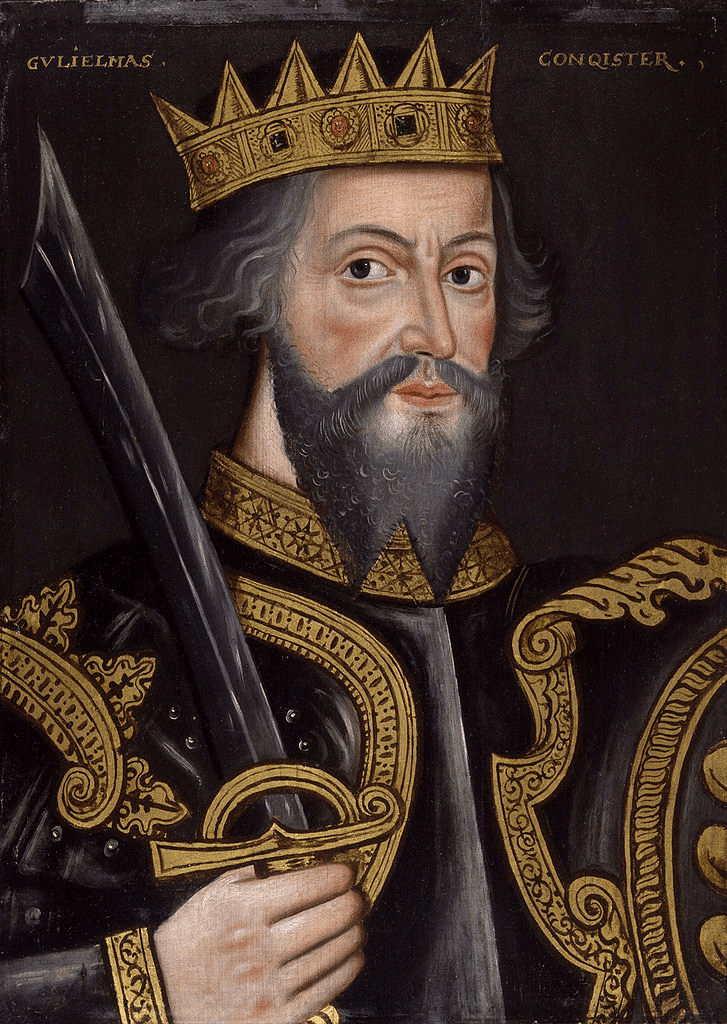
“How many are they?” asked the King of England.
Both sides had substantial numbers. The Norwegians, more, though, perhaps ten thousand.
Still, King Harold’s English army comprised his fyrdmen; elite huscarls; thegns who’d been levied; as well as some sturdy survivors from the recent Battle at Fulford, all standing at the ready for him, numbering some five thousand troops, most with weapons and some with horses. Those bereft of either, but eager to participate waited behind the lines to care for wounded soldiers and animals, and to replenish battle supplies.
Harold sat on his war horse, gazing at the field before him and the enemy awaiting him. It was time to attack, but he was busy savoring what he called the “sublime moment,” the pause before battle that shimmered with meaning to Harold, and of which he would not be denied.
Beginning his ritual, Harold inhaled the scent of his army’s damp horses and their hay-infused breath as they snorted in nervous anticipation. He inhaled again, appreciating the sweat and stink of his men, because they’d earned it marching with him one hundred and eighty-five miles from London. He could hear their mumblings and the rustling of their spears. From the back of the army he discerned arrows being drawn from their quivers. To his left and right, the cavalry was reassuring their war horses with muffled pats on strong necks. It’s a sacred time, thought Harold, for he always felt closest to God while staring at death: his heart pounding, his nerves tingling, his muscles taut, his vision sharpened to a hawk’s, and all the while praying that God might grant him tomorrow’s sunrise. Danger slowed the world around a warrior, so that when he charged, he flew with ungodly speed toward the enemy and fought with a brutality he possessed only on the battlefield.
Harold smiled. Truth be told, this moment was as terrifyingly mortal as it was holy, because he’d never found God in the thick smell of blood or the screams of the dying. Human fragility brought about a soldier’s end – a slip in the mud and the head left the shoulders – a decision to lunge … and an unnoticed spear exited one’s back.
King Harold took a final breath and opened his eyes, assessing the fluid situation across the River Derwent. A number of King Harald Sigurdsson’s Vikings, who’d been caught unawares by the English army’s arrival now scurried across the bridge to reconnoiter with their brothers on the safer side. Scouts had informed Harold that more of the Viking king’s troops were rushing back from their ships, slowed down by the mail, shields and weapons they were carrying back to these ill-equipped soldiers. Harold felt ever-so-slightly sorry for them.The English needed to attack immediately because right now, only Stamford Bridge, with its medieval wooden planks laid across the original Roman stone pillars, stood between them and an exposed Norse enemy. The bridge was narrow, though. His foot soldiers would have to cross it two abreast.
King Harold glanced down either side of his cavalry line. Each of his husctarls held one of his White Dragon banners. They’d be lowered to signal the charge, in unison to protect the king’s identity, since an hour ago, Harold had braved the Norwegian camp to offer his brother peace. Certainly, Tostig had revealed Harold’s presence to the Viking King by now.
“I’m ready,” said Harold to the air around him. He nodded imperceptibly and the banners dropped, pointing toward the battlefield and releasing his foot soldiers to explode toward the bridge, crossing it with bloodcurdling screams and swinging swords.
Just to panic the Norsemen, Harold led his cavalry down the long slope toward the River Derwent. Although the river ran deep and fast, if they could pass through its waters, they’d ravage King Harald’s men before the remainder of their army returned from Riccall.
The strategy worked. While the cavalry threw spears at Harald’s shield wall, archers like Unwin released arrows that ripped through the un-mailed bodies of the Viking King’s army.
The ferocious hand-to-hand battle felled many Norse soldiers, like trees logged into the river. Bubbles of blood rose to the surface, swirling in circles until the bodies drifted downwards. It seemed secure that the battle would be brief – until the stuff of legends appeared.
From behind the Norse phalanx on the other side of the river emerged a gigantic Viking berserker – dressed in bear pelts and swinging his huge double-handed axe from side to side, his sword sheathed at his massive waist. He foamed at the mouth like an animal before pausing to take a bite from his leather shield, hardly chewing it before swallowing. English soldiers later claimed they’d seen him transform from man to beast before their eyes as he growled and made guttural, non-sensical noises. The English army stared in horror to see him stride onto the Stamford Bridge. He blocked out the very light of the sun, they said.
Regardless, Harold’s foot soldiers neither faltered, nor hesitated, for the berserker had to be killed. Two at a time, they threw themselves at him, their weapons swinging, only to be whacked in half by his sword, dropping like broken dolls off the sides of the bridge into the river and onto the growing pile of bodies.
Unwin watched the berserker’s domination from the rear. He threw down his bow, grabbed his spear and ran toward a small tub moored on the riverbanks. In the mess of battle, no one noticed him navigating his way through the water, pushing off dead bodies until he was stationed beneath the loosened wooden planks of the bridge. The giant had slaughtered at least forty English troops, and Unwin was determined to end it there. Wedging his tub between one of the old Roman stone pillars and several bodies, he peered up through the bridge’s cracks, tracking the berserker’s movements. The moment the giant stood directly above him, Unwin heaved his spear upwards through a crack, screaming with all his strength to skewer the Viking’s stomach from the bottom, not stopping until he’d popped his heart with the tip of his spear. The animal/man shrieked and looked around for his phantom attacker as blood began to pour from his body. He bent over, his large eyeball looking directly at Unwin, who watched his huge forearms unsheathe his sword. He was aiming it through a crack, at Unwin’s head. Rolling out of the tub and into the river in the nick of time to avoid a split skull, Unwin looked back as soon as he thought it was safe.
The berserker hadn’t brought down his sword, after all. He must have hesitated and now was gazing blindly up at the sky. Then he lost consciousness and collapsed into a heap, blood spurting from his slowing heart. The bridge swayed wildly under his weight, tossing his body into the river where it landed on top of Unwin, pinning him underwater. He held his breath for an interminable time, groping for a path toward air, until he wiggled out from underneath the Norseman’s gargantuan carcass. By the time Unwin had dragged himself, gasping, from the River Derwent, the English were surging across the bridge again, cheering loudly. Thousands of soldiers were engaging in hand-to-hand combat, swords swinging and battle-axes smashing. The sound was deafening, but the Norse shield line was being broken.
The King of Norway, seeing his secret weapon dead in the river, and his men fighting at a deadly disadvantage, frantically attempted to rally them. He picked up one of his “Land-Waster” standards, its black raven menacing against a white background and waved it wildly, urging his men to counterattack. In so doing, Unwin realized he had a clean line of sight to the king from where he lay on the riverbank. Dragging himself to an abandoned bow and quiver with two arrows, he rapidly nocked one onto the string.
“I will not miss,” he vowed.
He released the arrow and watched it fly across the battlefield. He’d missed. Gritting his teeth, he nocked the other arrow, taking a split second longer to aim. This time his arrow snapped into its target, burying itself into the Viking King’s neck and buckling his knees before he lay on the ground trying to suck his last few breaths through a crushed trachea.
With their leader dead, the Norsemen fought uncomfortably. Tostig scooped up the Raven Standard to take command, but few had the confidence to follow Tostig. The Vikings were lost until Harald’s second-in-command, Eystein Orri, arrived with the men who’d run the twelve miles from their ships at Riccall while wearing mail and carrying shields and weapons. They joined the battle, but their exhaustion made them easy marks for the English, and they fell quickly, including Orri, the first of them to be hacked into pieces. As the sunset neared, some of the Norsemen tried to retreat. Most were cut down before they could escape. Tostig fought on, valiantly for him, until he and his huscarls were swarmed and killed where they stood.
The English army cheered their decisive victory.
“Huzzah to the mighty King Harold!”
But Harold regretted not witnessing his brother’s death, so as darkness fell, he lit a torch and searched among the nearly 7000 corpses until finding Tostig’s mutilated body. Kneeling to say a prayer, he removed a ring from Tostig’s finger.
“He fell here,” Harold informed his men, “and you can retrieve the body tomorrow. We’ll carry it back and bury him at Westmynster. He should have accepted my offer for peace. Now help me find King Harald Sigurdsson.”
The robust older Norwegian wasn’t difficult to find. Harold stood over him, staring. He’d admired the brave, smart and just king, for years. Harold had a feeling he was looking at the last Viking King the world would admire. He closed the man’s eyes and placed stones on them.
“Leave him here for his men to take home. His son needs to bury his father.”
Then King Harold left the battlefield for York. The war was over, he’d squashed the insurrection and tonight he’d enjoy the exhilaration of achieving the impossible – his army had obliterated King Harald’s Vikings, and that, after the brutal march from London to York. The age of the Vikings was finally over.
King Harold made a point of granting mercy to Harald’s fallen army. Not many remained – only enough to sail home twenty-four of the original three hundred ships.
“You may go in peace,” declared Harold, “but you are leaving England forever, never to return.” They nodded, grateful to return home.
Harold was ambitious. He knew it. England knew it. But in his heart lay the desire to be respected in peace as well as in war. He believed he’d clearly achieved that at Stamford Bridge. Surely, he could now rightfully demand unquestioned fealty from his subjects, even those who’d originally doubted his claim to the throne, and he believed that he’d earned a place as one of the greatest kings in English history.
He rested among his men for a few days, and then honored them with a victory banquet for their efforts. England was secure.
But in the midst of their rowdy festivities, a courier arrived seeking the king, and bearing a history-altering message.
King Harold shook his head.
“You’re certain?” he asked the messenger.
“I’m certain,” the messenger answered.
“You may go.”
The King of England buried his head in his arms.
Against all odds, Duke William and his Norman army had landed on English shores.

My girlfriend told me a great joke: A lady was asked if she’d ever read Shakespeare, to which she snorted, “Yes, but it was just a bunch of cliches!”
In her less-than-enriched world.
As we know, “Some are born great, some achieve greatness, and some have greatness thrust upon them.” Twelfth Night
Some never learn that, “The better part of valor is discretion.” Henry IV
For, “The lady doth protest too much, methinks.” Hamlet
“Truly, what fools these mortals be!” A Midsummer Night’s Dream
And, specifically for our lady …
“Get thee to a nunnery!” Hamlet
April 23rd is William Shakespeare’s birthday. He’s around 456 years old. This date comprises one of the cosmic clumps in my life, for April 23rd is also the birthday of our youngest grandchild, James, who is turning seven; plus, it’s the birthdate of a dear friend’s husband, as well as the date of his passing. There’s great significance to this last coincidence, for Dr. Roger Gross was a renowned professional Shakespearean scholar, director, actor, composer and playwright. Dr. Gross taught Shakespeare and playwriting at the University of Arkansas and wrote a marvelous book entitled, “Shakespeare’s Verse,” which scrutinizes and explains with masterful authority how properly to scan Shakespeare’s writing.
I’m currently rereading Macbeth. I guess I just can’t get enough of those witches, which, incidentally, originally were played by men.
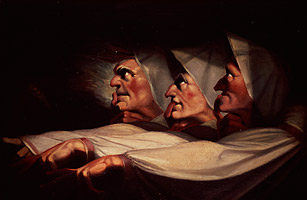
The main reason I’m taking on this darkest of Shakespeare’s tragedies is that Malcolm III figures prominently in the play. Yes, that Malcolm, the husband of Queen Margaret of England, about whom I’m writing my trilogy. I’m half-through Book Two’s manuscript, which centers on the Norman Conquest. Book Three is all about Malcolm and Margaret.
In Macbeth, Malcolm and Macduff rise up to defeat King Macbeth, with Shakespeare giving Macduff the honors of beheading Macbeth. This is most likely dramatic license, or else post-Shakespeare scholarship has simply decided differently. You’ll want to hang with me through Book Three to find out. In the meantime, for me to read Shakespeare’s character of Malcolm, while continuing to research the historic Malcolm, is another cosmic clump, which makes my life fuller and more meaningful. And it’s so cool.
“To thine own self be true.” Hamlet
Happy Birthday, William Shakespeare, Roger Gross and James Bowman!


By now, most of you have seen some photos of our trip to Scotland and the visit to Castle Dunfermline. It was inspirational for me, since I’m writing about Queen Margaret and King Malcolm III.
Now I’m going to let you view an “outtake” from the excursion. My excuse for what you’re about to watch is that I’d recently had leg surgery and was still gimpy. Those of you who know me personally may insist that no, this is just typical Lisa, although I can’t imagine why.
Our friend Colin Hewitt (see my last post) and I went down inside the ruins to the kitchen area. I don’t know how the servants got up and down the steep and very narrow winding stairway. My right leg was having none of it, so I wound up crawling. What I didn’t know, was that Chuck was waiting for me at the top of the stairs. No problem. I think I salvaged my dignity.
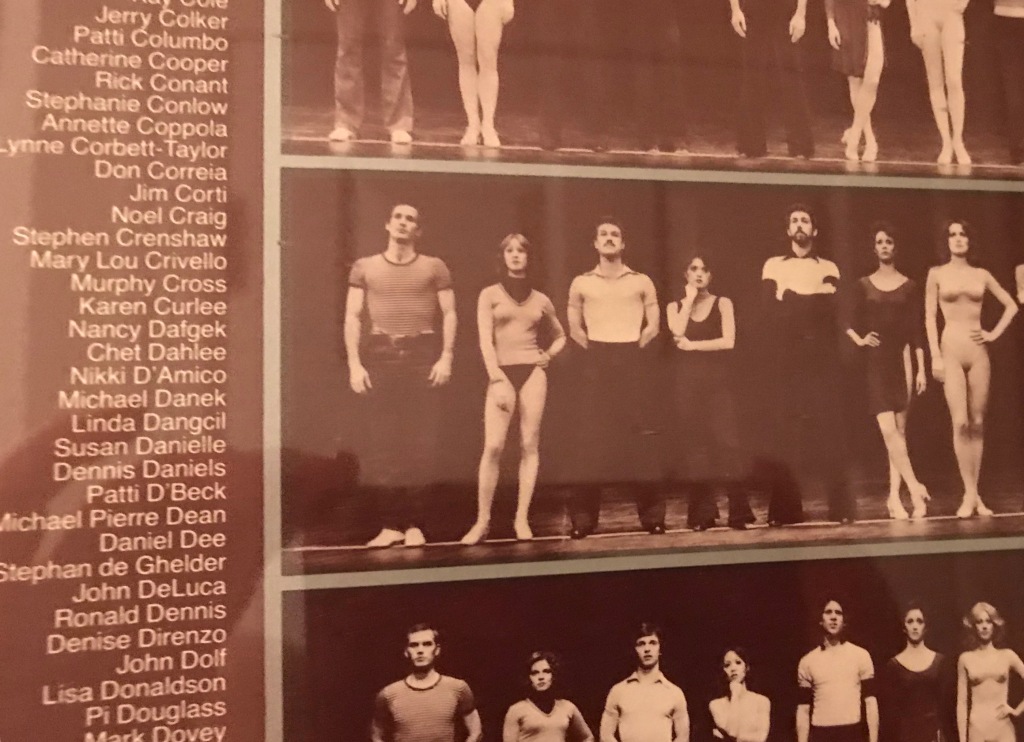
Somewhere on my journey, on some rail station platform, I stood in a crowd, hoping to catch the right train. An unintelligible announcement came over a scratchy speaker. I couldn’t understand a word, so I turned to a rosy-cheeked gentleman to my right, asking, “What did he say?” John Hewitt laughed and filled me in. We chatted and decided to sit next to each other. Across from us was an Englishman and an Aussie – each of us speaking a different flavor of English. My accent sounded crass to my ears, but it was quite an amusing ride to Musselburgh, where John and his family lived.
John told me he was taking me home, where the family would take care of me for a few days. They did, driving me all around the countryside, where I saw lambs gamboling for the first time; and to castles; and back to their home for dinner. They had three boys, David, Colin and Alistair – three fine lads – I liked them all.
After my two weeks in Britain ended and I returned to Los Angeles, the Hewitts and I stayed in touch. John and Doris and I corresponded for years. Doris sent me photos as the boys grew up. Then John and David died, but Doris and I kept up, until one day, the letters stopped. I knew.
About two years ago, Chuck and I decided to visit Edinburgh, so I could research my trilogy about St. Margaret of Scotland. I wanted to reconnect with the “boys.” I remembered that Colin had become a policeman. In this era of social media, I found him in five minutes. He’d gone on to become a detective, and was now retired. He picked up where his parents had left off, driving us to Dunfermline, the home of Margaret and Malcolm III.

My husband, Chuck, on the left, and Colin on the right, stand outside a closed St. Margaret’s Cave, where she often went to pray.
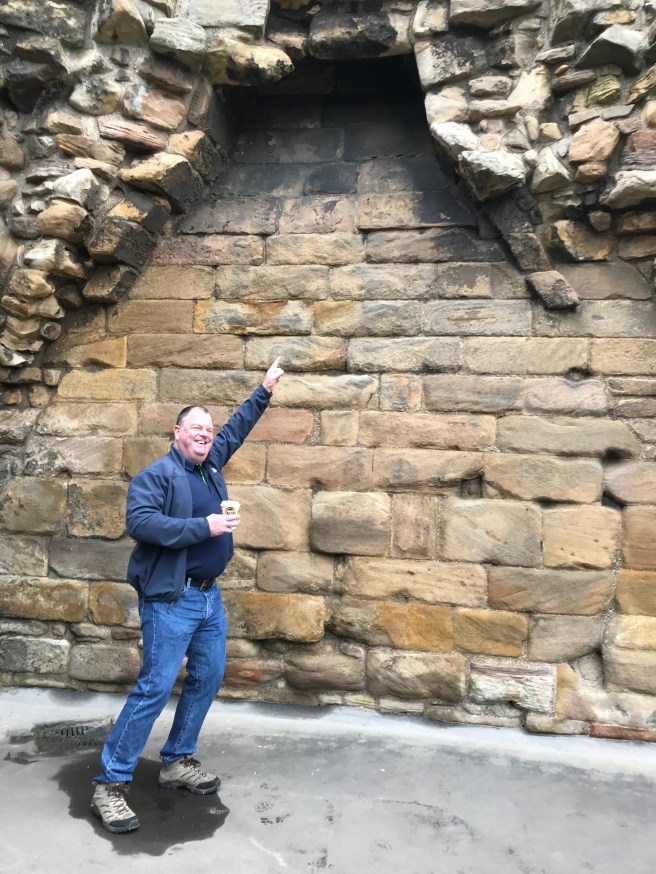
Colin points to a large chimney in the kitchen adjacent to the abbey. Cooks got burned frequently in those days!
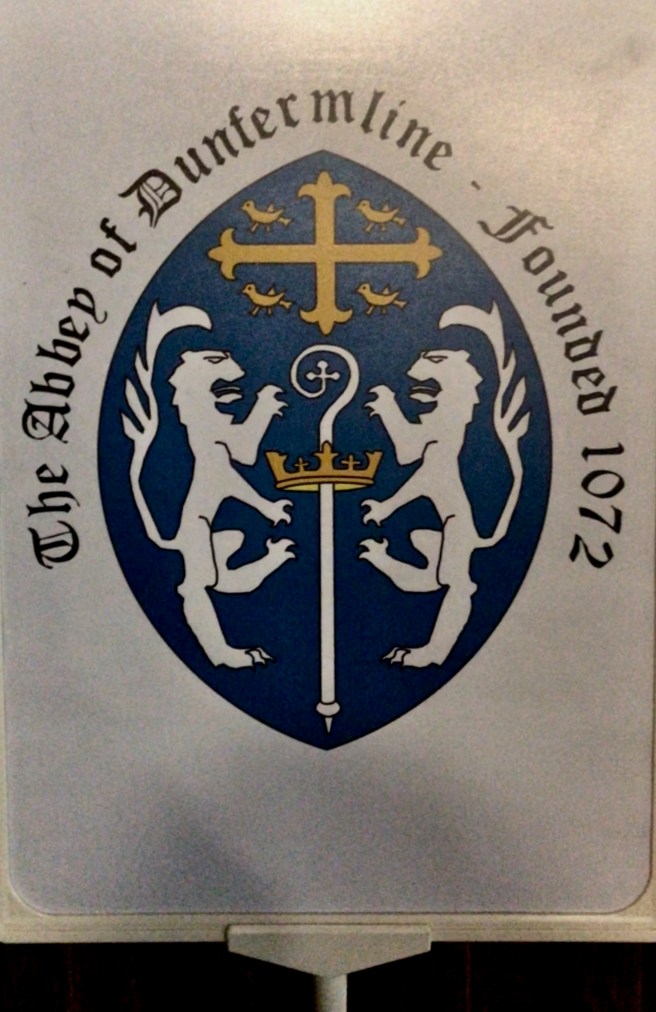
Yes! 1072!

This is the new church at Dunfermline Abbey. For an image of the old section, in which Queen Margaret and King Malcolm III were married, see the photo at the top of this page. Do you remember the Mel Gibson film about William Wallace, “Braveheart?” Well, Robert the Bruce was much more important to Scotland’s history than Wallace was. Would you like to see what Robert the Bruce looked like? He’s just to the right of the altar.
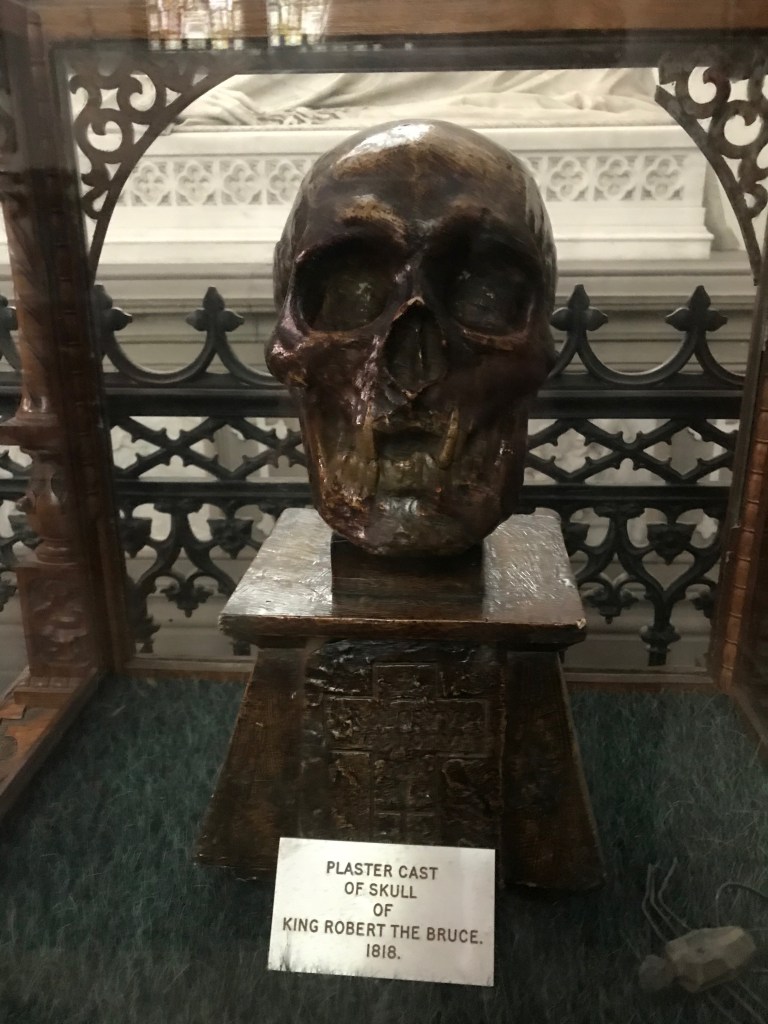
Anyway, the next day, we met the “boys” and their wives for lunch at a local pub called Greyfriars Bobby.
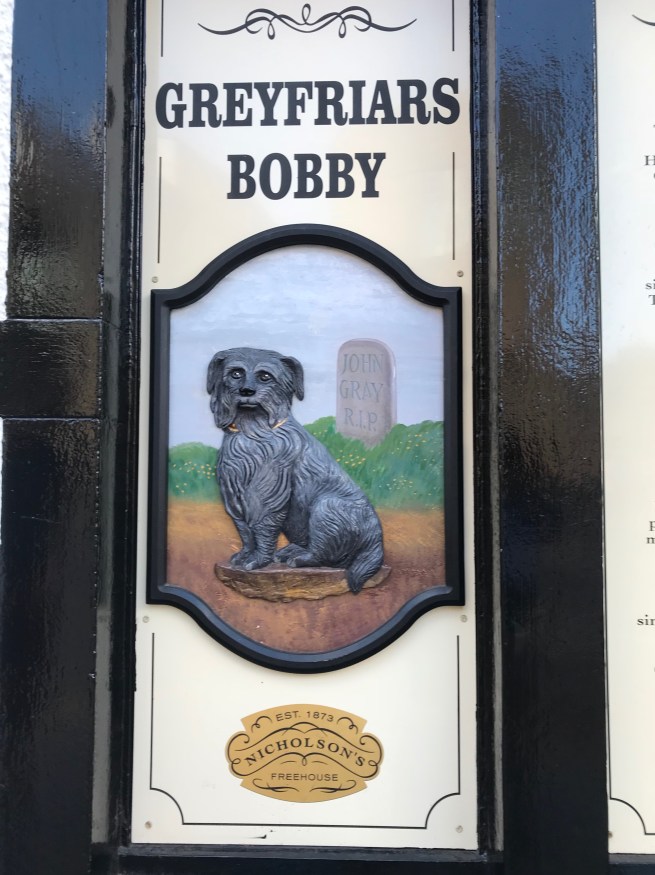
Bobby was a sweet Skye Terrier who guarded his master’s grave for 14 years until he died in 1872. People still leave sticks for the pup to play with. Don’t miss Bobby’s grave the next time you visit Edinburgh.
“Let his loyalty & devotion be a lesson to us all.”
Good dog-dog.

Oh, my heart.
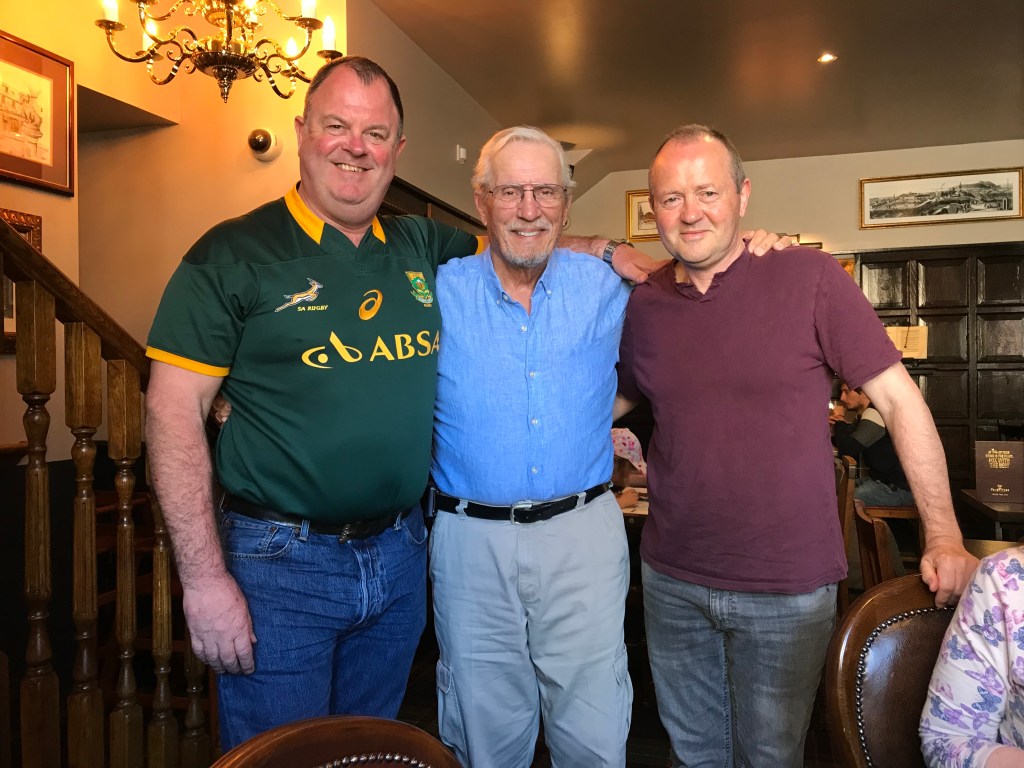
Finally, what you’ve been waiting for: Colin Hewitt; my husband, Chuck; and Alistair Hewitt. We toasted John and Doris over lunch. I’ll never forget John’s kindness to me at the train station that day, so long ago. The Hewitts will always be a part of my family.

Here’s the rest of the “family.” In the back, left to right: Colin and Alistair. In the front: Carol, Colin’s superb wife; me; and Liz, Alistair’s fabulous wife.
By the way, after all those years as a detective, Colin has written a detective mystery you will want to check out: Neglect of Duty.
And now that you know my story, I invite you to read the result of that first visit to Scotland – Book One about Queen Margaret of Scotland’s life.

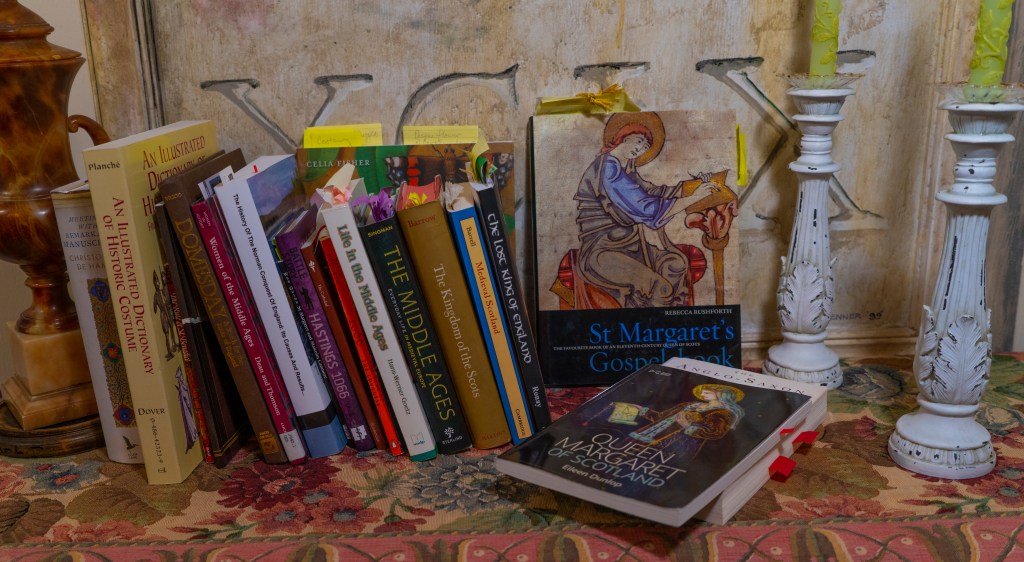
These are a few of the books I referenced at home in writing “As a Deer Yearns for Running Streams,” about the eleventh-century Queen Margaret of Scotland. I also scoured ten or so more books during our stay near the the Scotland National Library in Edinburgh, and took copious notes from more than thirty at San Marino’s Huntington Library. Research is truly one of my favorite things: it’s falling down the rabbit hole; searching for Easter eggs; holding the golden ticket for Willy Wonka’s factory. It’s weirdly exhilarating !
If you enjoy historical novels or know someone who does, may I suggest this book as a Christmas present? It’s full of history, as seen through the eyes of many of those who lived it. Queen (and Saint) Margaret was a beautiful, kind and conflicted woman. “As a Deer Yearns for Running Streams” is Book One in a trilogy. Book Two is well underway on my computer, and, surprise – there’s even a prequel in the works! This is a project from my heart. I hope it will touch yours.

MAY THIS SEASON BRING PEACE AND JOY TO THE WORLD AND MAY YOUR HEARTS SWELL WITH THE PROMISE OF A NEW YEAR! With love, Lisa
– Emily-Jane Hills Orford for Reader’s Favorite
– The Very Reverend Canon John E. Crean, Jr., Ph.D
– Nan Rae, Internationally recognized Chinese Brush Painter, Author of “The Ch’i of the Brush.”

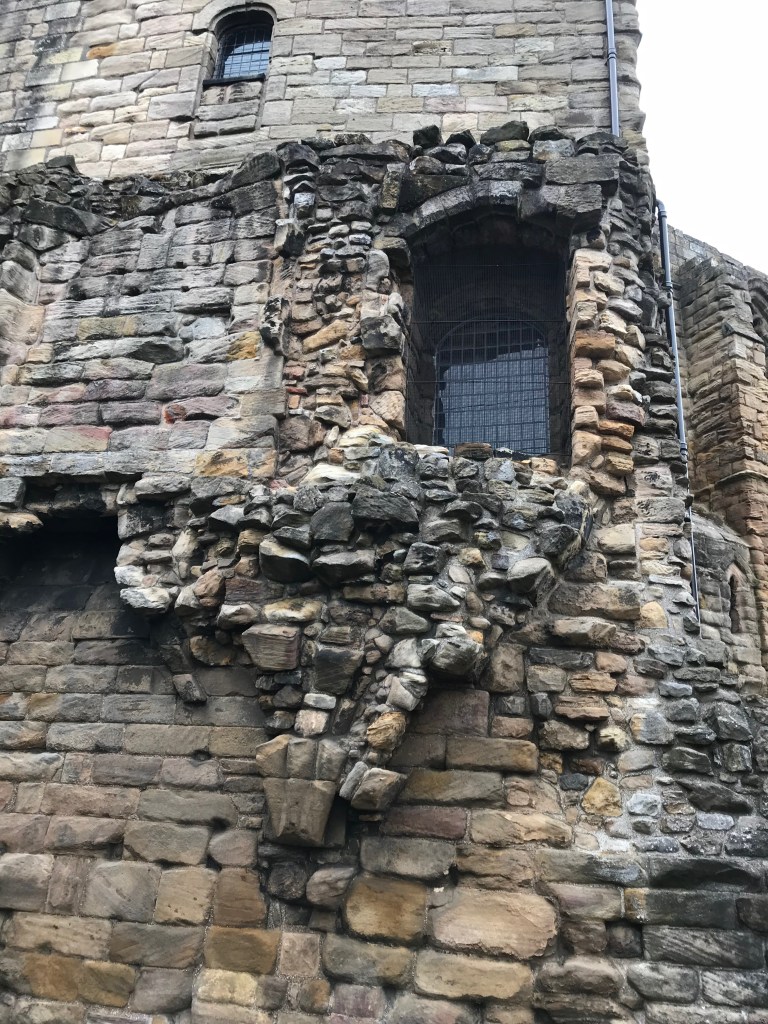
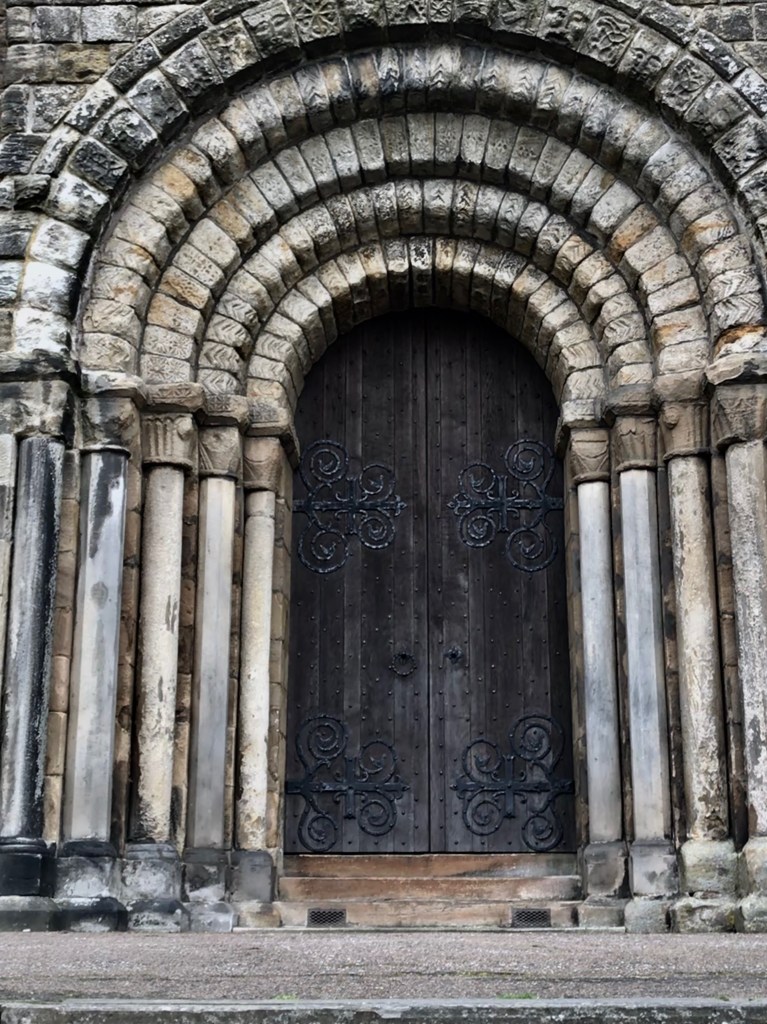

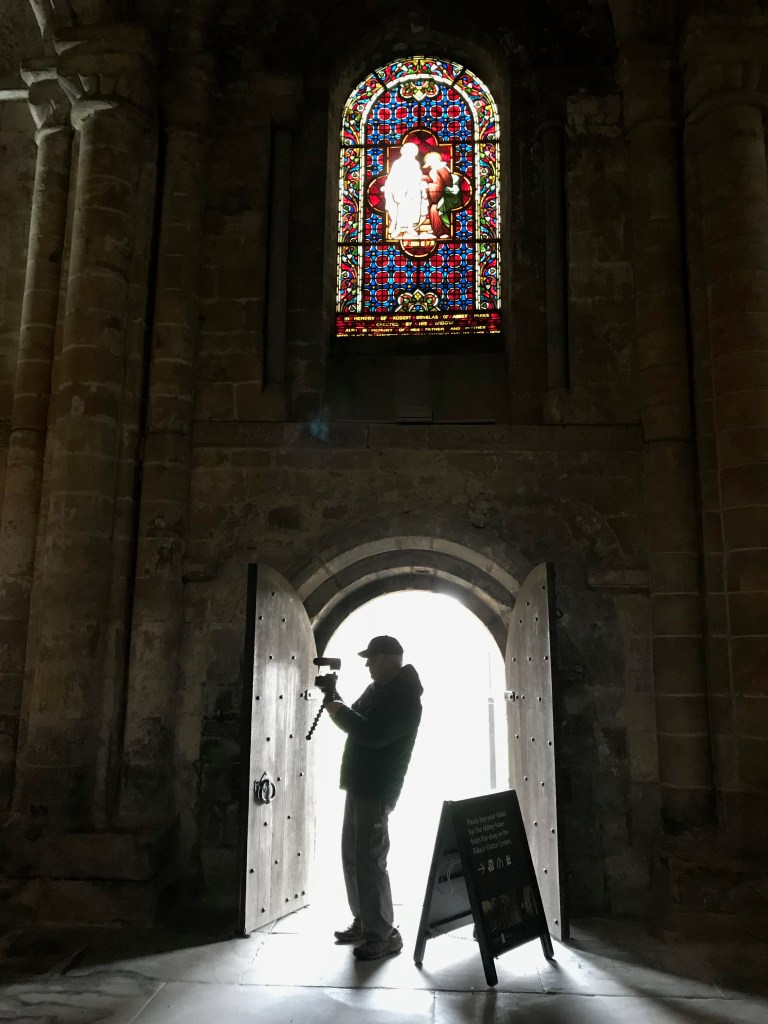



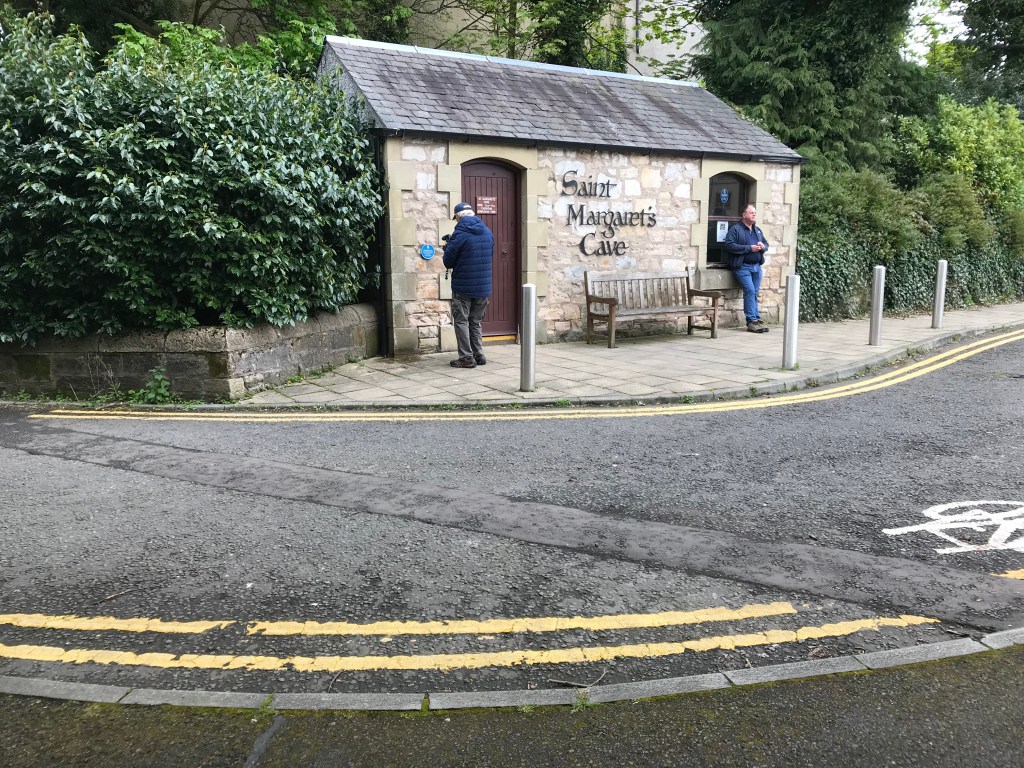

You’re invited to enjoy eleventh-century history in Book One of a trilogy about
“The Pearl of Scotland,” Margaret of Wessex.




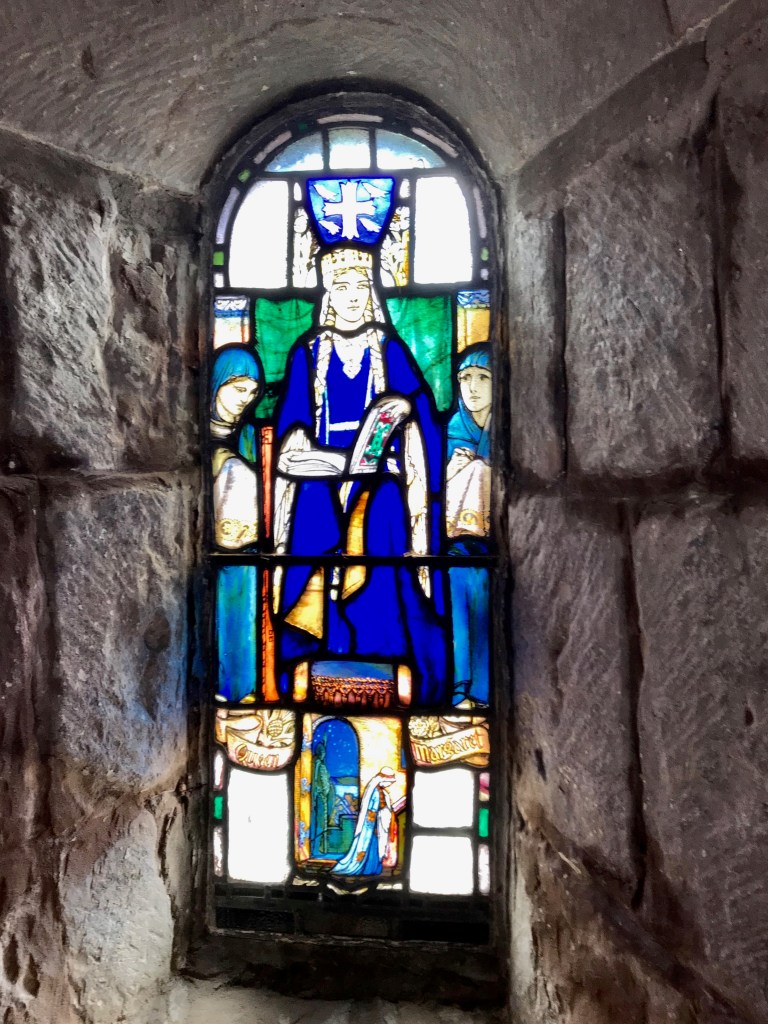




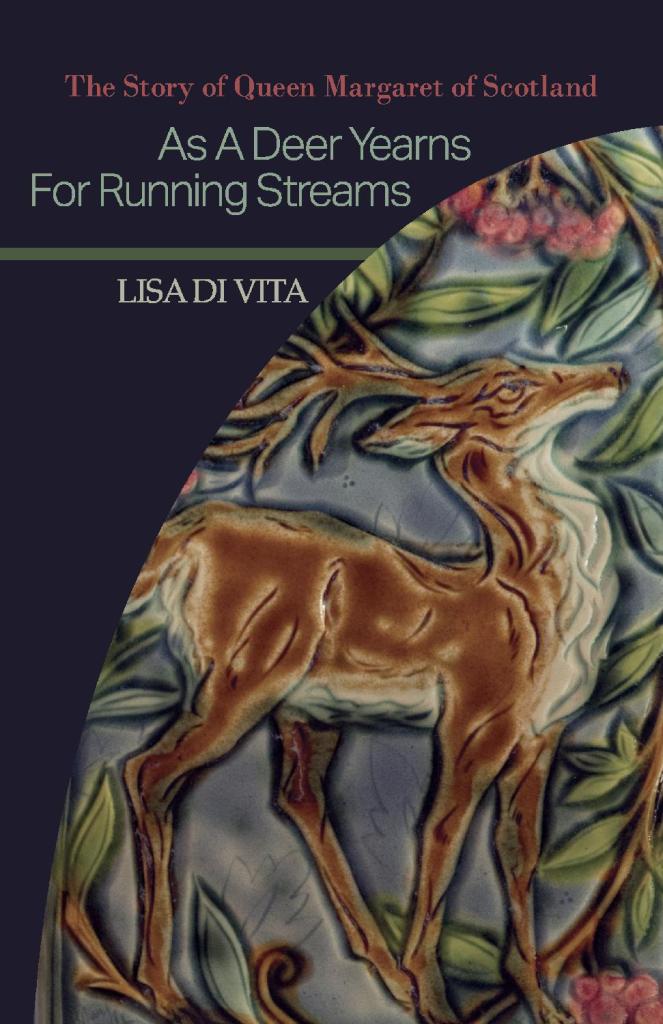
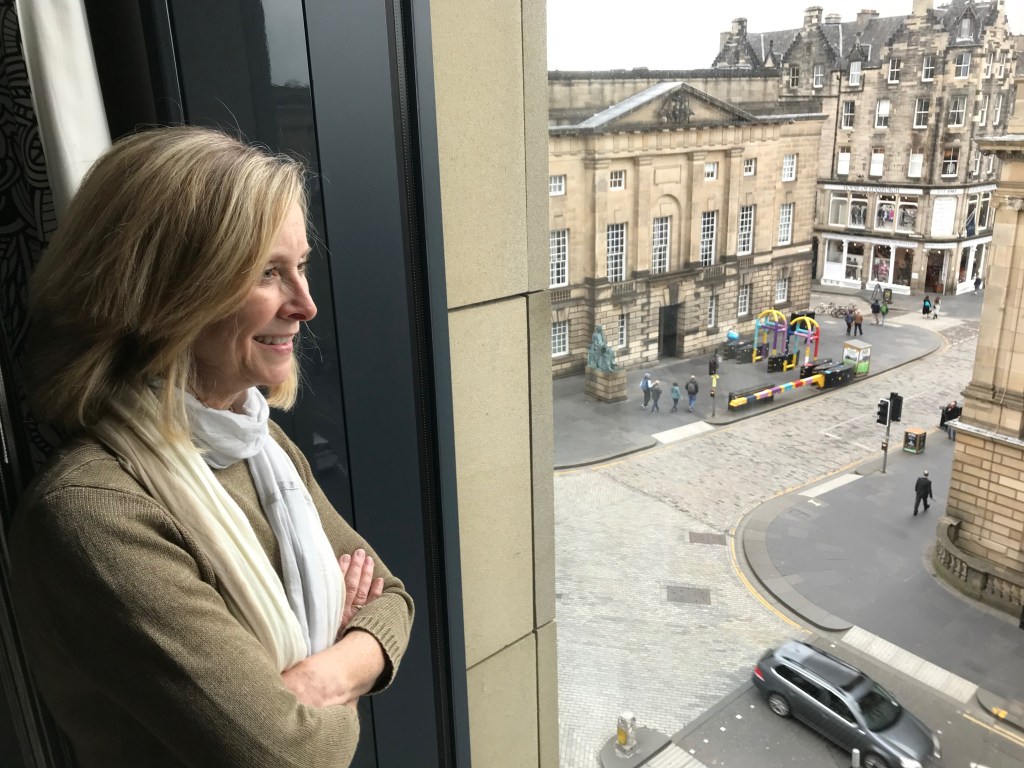
These photos are from an earlier visit to Scotland. We were dragging our tail feathers until we got to the hotel and looked out at the city of Edinburgh. As I mentioned in the previous blog, the National Library of Scotland was right across the street, making my research about Margaret, 11th-century Queen of Scotland, pleasantly convenient.





You may remember seeing this tile crafted by Mary Philpott on this blog. Scroll down to earlier posts to read the story about how I “met” Mary online and asked to use this tile for the cover of my historical novel, which is entitled, “As a Deer Yearns for Running Streams, The Story of Queen Margaret of Scotland,” and will be out in about five days, as an eBook and soft bound.
This novel is one in a series of three about a fascinating 11th-century queen and saint who conquered personal loss, survived the Norman Conquest and became a beloved queen. Researching her for nine months, both in Scotland and at the Huntington Library in Southern California was an exciting adventure for me.
Over the next few days, I’ll be sharing some images from our 2018 trip to Scotland. I managed to book a hotel right across the street from the National Library of Scotland.

I hadn’t been in Scotland since I was 25. (I’m older than that now.)
I love Scotland and Chuck and I had a great time there. We traveled to Dunfermline, where Malcolm III and Margaret lived. I can’t wait to show you the photos from there.
I’d love to share Margaret’s story with you. You should be able to preorder the book now on Amazon, at least the eBook. The bound version will be showing in a few days. Amazon looks favorably on preordering, so if you feel so moved, please do. Here’s the cover:
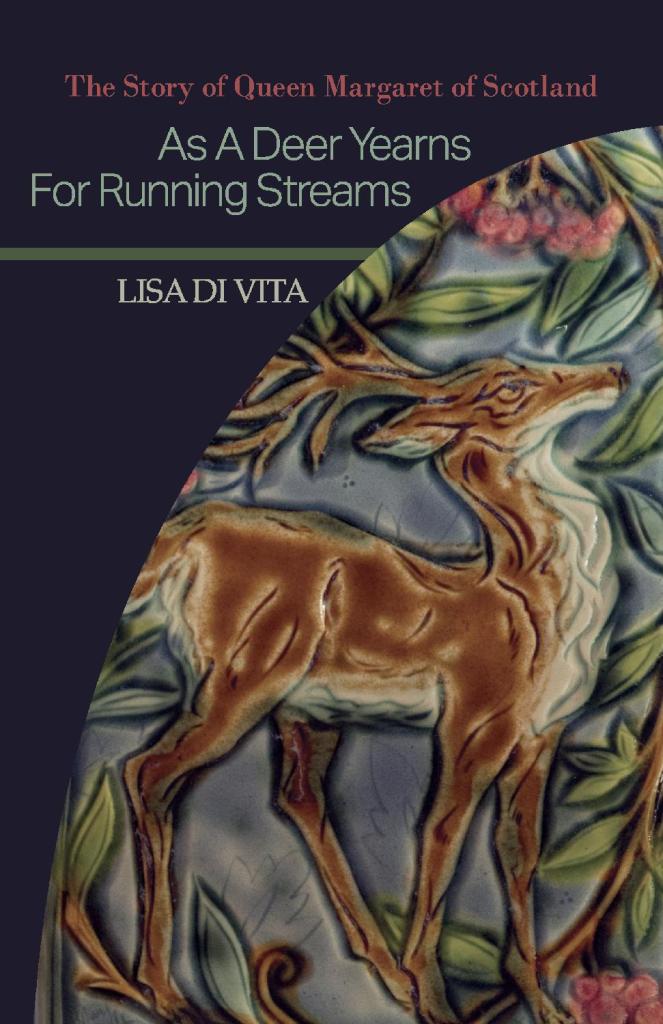

Heavy the head that wears the crown. Well, actually, the quote is, “Uneasy lies the head that wears a crown.” Shakespeare wrote it for “Henry the Fourth, Part Two,” and he’s referring to uneasy sleep when you carry heavy responsibilities. Still, any way you slice it, crowns are heavy. Can you imagine trying to nod your head while balancing this on it?

But there’s something very special about this particular crown: it holds the oldest jewel in England’s crown jewel collection. Nope, it’s not the large jewel in the center of the crown. It’s the one at the very top and it dates back to the eleventh century. This sapphire once belonged to King Edward the Confessor, who is responsible for beautiful Westminster Cathedral. His death in 1066 precipitated the Norman Conquest, which changed history.

Edward, who despite his renowned piety, left something to be desired as a king, wore the sapphire in a ring. The legend goes that one day he came across a poor beggar and discovered he had nothing to give him, so he removed the ring from his finger and handed it to the beggar. Several years later, two men returned the ring to him, saying that St. John the Baptist had appeared to them. The biblical John had told them that one day, he had approached King Edward disguised as a beggar and that the king had given him the ring. Because of his generosity to the poor, the king would be blessed forever.
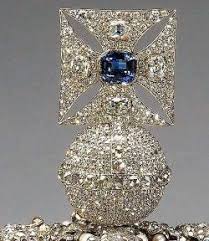
The stunning sapphire has been recut since the eleventh century, but it truly is a crowning jewel in England’s rich history. And now you know, if you didn’t before.

You just might be and you don’t even know it.
But don’t worry, no one can tell just by looking at you.
Find out if you’re biphasic:
1. Do you take a nap during the day?
2. Do you sleep for awhile at night, wake up and do some things and then go back to bed?
3. Did you live at any time in human history before about 1925? (!)
If you answered yes to any of these questions, you are biphasic, meaning you sleep twice during a 24-hour period. In fact, from the dawn of mankind, until electricity became common (by 1925 half of American homes had it), many, if not most, people went to bed around dusk for their “First Sleep,” awakening around midnight. Then they might play a game, stoke the fire, meditate, do a few chores, have sex, or steal some fruit off a neighbor’s tree. After about an hour, they’d go back to bed for what was called “Second Sleep,” until the sun came up.

Of course, Medieval monks had to be biphasic, rising around 2:00 a.m. during winter for Matins (one of the divine offices as set by St. Benedict), after which they might or might not go back to sleep for a while longer. The above picture depicts a demon suggesting to an eleventh-century monk, Raoul Glaber, that he stay asleep, rather than dragging himself to pray the Psalms in the middle of the night. “I wonder why you are so eager,” the demon would say, “to jump so quickly out of bed, as soon as you’ve heard the signal, and to interrupt the sweet rest of sleep, while you could give yourself up to rest until the third signal.”
The wealthier the Medieval individual, though, the later they tended to go to bed and the more likely they were to take their sleep in more or less a single block, say, going to bed at midnight and awakening briefly early in the morning and then going back to sleep until the sun was fully up. In fact, it was something of a status symbol if one was able to sleep all night without waking up.
Interestingly, it was recommended that children sleep through the night, getting nine or ten solid, consecutive hours. I’m thinking that was more for the parents than the children.
Unfortunately, biphasic sleeping didn’t eliminate sleep disturbances like insomnia or sleep-walking. Nor did it quiet the neighbors’ barking dog. Furthermore, studies show that people who sleep for a single block of time live longer. Einstein slept ten or more hours a night, so I guess it also makes you smarter.
Sorry, sometimes I simply need that nap.
– Lisa Di Vita

Falconry, or “hawking,” a method of hunting game wildly popular during the Middle Ages, probably originated about 4000 years ago, possibly in Persia. My single brush with the sport occurred in Riverside, CA. I took two sessions of what was supposed to be classes in the rudiments of animal training, and perhaps they were. I only know that in my experience, we mostly cleaned up animal poop. But I loved it anyway. I was around elephants, primates, big cats and exotic birds. In theory, our instructor, the head master, was a film animal trainer, known for having developed a unique, gentle way of getting the best from his animals. They must have missed him greatly when he was convicted of animal abuse!
Anyway, the high point of my animal “training,” (in-between poop runs), was the day we each took a turn donning a thick elk hide glove for an opportunity to have a Peregrine Falcon land on our arm. In my case, the dang glove ended somewhere near my shoulder, but nothing mattered the moment that very solid and primal bird landed and dug her talons into the leather, which I now was grateful covered most of my arm. And yes, I could feel the talons through the elk hide.
The raptor’s power was magical. Awe short-circuited my brain as I imagined this beautiful and deadly assassin taking out a duck mid-air with one slicing move.
Medieval falconry, or hawking, terms that are sometimes used interchangeably, but rather erroneously, was more than just a sport. Much more, for a while. Certainly, it was an effective method of hunting and one that was highly regulated by class. But the sport reached the level of a fad, a craze, an obsession, sought after by rich and poor alike. Nuns, yes, nuns walked around with hawking birds on their arms. Given what these birds of prey eat, can you imagine how much Febreeze the nuns’ habits required?
In the trilogy I’m writing about Queen Margaret of Scotland, falconry is highlighted several times. One example I give of an avid falconer is Edward the Confessor, who is King of England when young Margaret and her family arrive from Hungary. He was known to go daily from Mass to the mews to pick up his hooded bird. As always, it’s good to be king.
A number of birds can be utilized for hunting, and each one has its unique skill set. Let me just say that the Peregrine Falcon flies very high in the sky, exceeding speeds of 200 miles per hour. She can dive during flight at 186 miles per hour. The Peregrine is not only the fastest bird on the planet, but the fastest animal. The Peregrine kills on impact with clenched talons.
Poor duck.
Now when you read about Edward the Confessor hunting in “As the Deer Yearns: Queen Margaret of Scotland, Book One” (coming soon), you’ll be better able to picture what it was like! You’re welcome.

This image, “Medieval Bestiary Deer: Deer in a Rowan Bower,” is a tile created by artist Mary Philpott. It will grace the cover of the first book in my trilogy about Queen Margaret of Scotland. I couldn’t be happier with this magical deer, or more amazed that I found it. Generally, the internet seems as destructive as it is interesting, but occasionally it connects people who would never meet but for electronic surfing. That’s how I found Mary. I don’t remember exactly what I clicked on that brought up her work, but what I saw made me stare at the screen in joy. It felt like destiny.
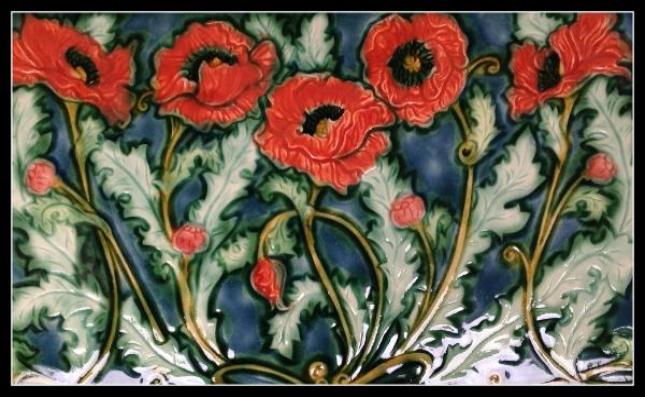
I clicked my way to Verdant Tile Co. (verdanttileco.com), Mary’s company, and discovered the extent of her talent. These hand pressed porcelain tiles are contemporary, yet feel historical. She’s got a Medieval soul, for sure. I’ve already chosen two other tiles for the 2nd and 3rd books in the trilogy, but you’ll have to wait a while to see them, (just for the suspense). Mary’s been most gracious and generous, and as it turns out, she has numerous facets to her art, personality and lifestyle. I had to share her with you, so here goes:
Mary Philpott lives out in the countryside in Uxbridge, Ontario, surrounded by hundreds of acres of forest, “part of which we are stewards of and maintain paths, keep bees and report to the government on wildlife.”
Mary attended the University of Guelph to study Art History and Archeology. Her goal was studio art, but she fell in love with history, especially the Medieval era. After studying Anthropological Archeology, she enrolled in Sheridan College School of Craft and Design for textile design. Once she discovered clay, she’d found her calling.

I asked her some questions about her work. Her palette is unabashedly rich, and she described much of her inspiration as from Provence, France.
Mary: “I think the clouds of Provence are found in the textiles of the region. They are that sunny, deep ochre type yellow that the sun shines through. My yellow is like that and (also) like the honey I find, and the green is that deep, rich emerald type green. The blue is also found in (Provence) textiles. The colours are also similar to the early 1900s Majolica ware found in France, Italy and Portugal.”

More recently, Mary has discovered a love of sculptural ceramics, and I think her delightful forest animals vibrate with character! She says she’s always loved animals. I think she sees them in a unique way.

Thank you, Mary, for letting me share the wonderfulness that is you!


I’ve spent the last 10 months researching an 11th-century historical work of fiction: a trilogy about Queen Margaret of Scotland. “Living” in the medieval world has grabbed me and I want to make contact with others who also love that time period. Here’s my request to you: I need to select an image for the cover of the first book, post-haste. I find the image above very appealing. Do you? There’s a white hart featured in book one, which is a reason I like it, even though it was painted way after Margaret died.
If you have other ideas for a cover, please comment. And include an image! At the moment, I’m not so interested in an image of a female, but it you think you have the perfect one, send it along.
Thank you! Let’s do this together!
Happy Saint/Queen Margaret’s Day! This intelligent. beautiful queen died at Edinburgh Castle in 1093, leaving behind a legacy of influence on the fabulous country she ruled with Malcolm III.
Celebrate the feast day by enjoying photos of Edinburgh Castle, the building in the spot where she died and some random shots of Edinburgh!

